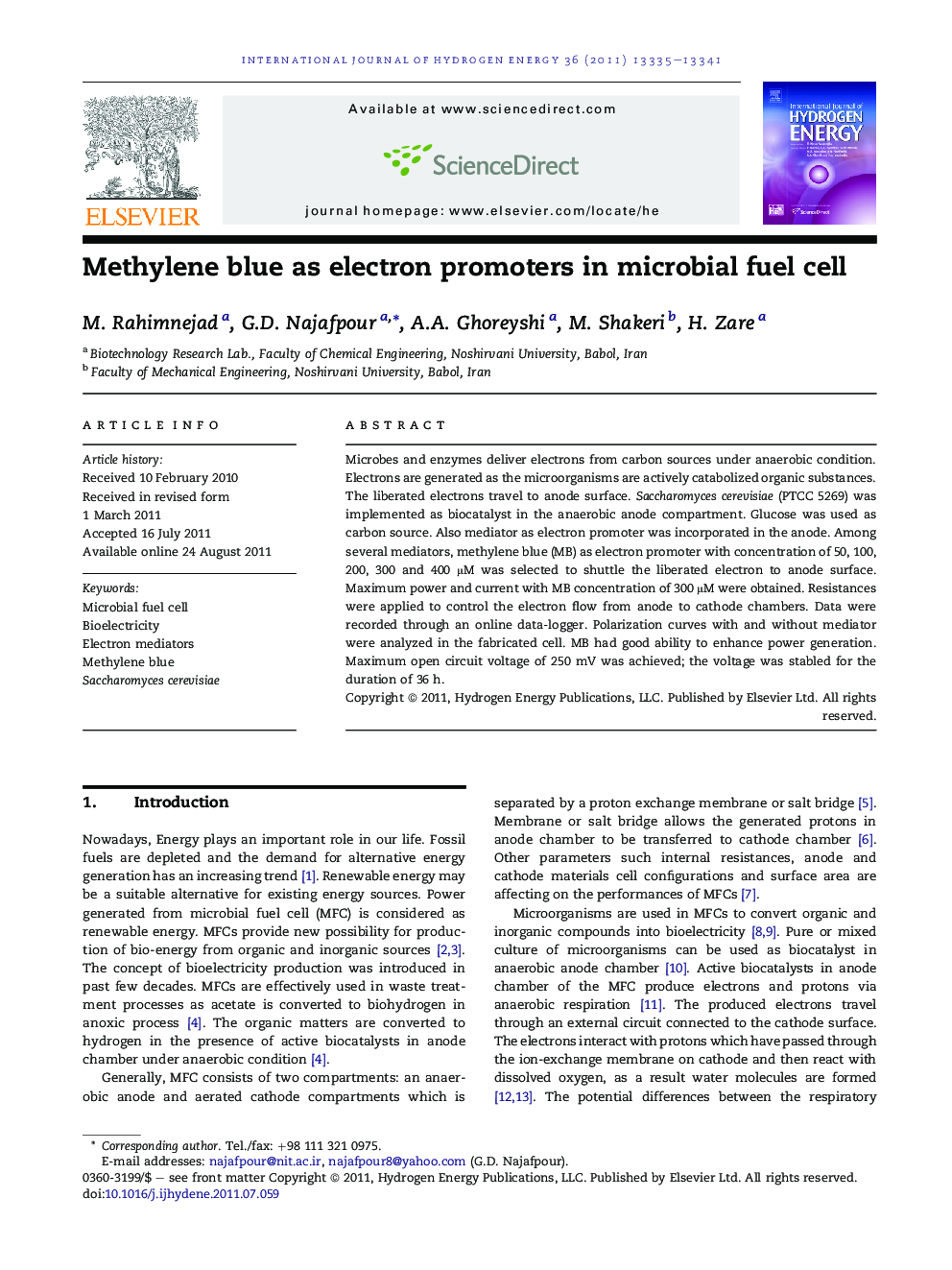| Article ID | Journal | Published Year | Pages | File Type |
|---|---|---|---|---|
| 1272005 | International Journal of Hydrogen Energy | 2011 | 7 Pages |
Microbes and enzymes deliver electrons from carbon sources under anaerobic condition. Electrons are generated as the microorganisms are actively catabolized organic substances. The liberated electrons travel to anode surface. Saccharomyces cerevisiae (PTCC 5269) was implemented as biocatalyst in the anaerobic anode compartment. Glucose was used as carbon source. Also mediator as electron promoter was incorporated in the anode. Among several mediators, methylene blue (MB) as electron promoter with concentration of 50, 100, 200, 300 and 400 μM was selected to shuttle the liberated electron to anode surface. Maximum power and current with MB concentration of 300 μM were obtained. Resistances were applied to control the electron flow from anode to cathode chambers. Data were recorded through an online data-logger. Polarization curves with and without mediator were analyzed in the fabricated cell. MB had good ability to enhance power generation. Maximum open circuit voltage of 250 mV was achieved; the voltage was stabled for the duration of 36 h.
► Power generation was investigated in a dual chamber MFC. ► Methylene blue as electron mediator was selected to shuttle the liberated electron to anode surface. ► Polarity method was used to analyze experimental data. ► In batch system, OCV was stable for the duration of 36 h of operation. ► Maximum generated power and current with Methylene blue were 12.3 μW and 232 μA, respectively.
